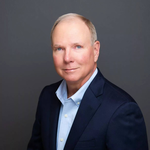“Change Is Fragile, and It Must Be Protected”

Wayne heard the dramatic statement “change is fragile, and it must be protected” at a Family Firm Institute conference over 20 years ago, it resonated with him, and it stuck in his brain permanently. Why are changes so hard to make? And why are they even harder to sustain?
Tune in this week as Wayne refers to The Change Model and tries to explain how you can use the model to initiate and sustain necessary changes in your organization. As always, we welcome your comments.
Fall session of The Contractor Business Boot Camp is full. If you missed the chance to enroll your high potential nextgen leaders to this one-of-a-kind transformational leadership development program, contact Charlotte at ckopp@familybusinessinstitute.com now to put them on the waitlist for Spring 2022 session. Stay tuned – we will be announcing the dates soon.
P.S. – Click here to download The Change Model
Hello, this is Wayne Rivers at FBI, and We Build Better Contractors.
This week, I want to talk about an amazing statement that I heard well over 20 years ago at an FFI meeting. So, we're all in a trade association, whether it's AGC or the Masonry Contractors Association or ABC or something else.
So back in the day, when we were family business consultants, we were members of the Family Firm Institute, I went to a convention. And one of the speakers said something that I think might be as profound as any statement I've ever heard in my entire life. She said, "Change is fragile, and it must be protected." Now she was talking about that in the context of dysfunctional family businesses, "Change is fragile, and it must be protected," and she, of course, was right. But what about even healthy construction companies? Is change fragile? And must you protect it? And I think you absolutely should.
We talk about our change model, and we'll put this graphic up, and you can download it. We've talked about it lots of times. It was even the basis for my last book. And the change model talks about, in a graphic way, the human reaction to changes large and small. You've heard me tell the story about changes in our church, changes in our club. People can't stand change. They run from change. They fear it. They loath it. They avoid it. Change is anathema to so many people, but change is a part of life. Death, taxes, and change, I mean, those are the three things that you can count on in life.
So, the change model begins with the old status quo. That's where somebody is. A catalyst takes place, an outside influence, an inside influence, a client leaves, a customer leaves you, there's a lawsuit or something like that. You know, there's some catalyst happens, and that puts you into a period of chaos. Your accounting software no longer works well for you. That puts you into a period of chaos. Today, cyber issues, cybersecurity issues throw people into a period of chaos.
But as you work through the chaos and chaos is a horrible place to be. Nobody likes to be in chaos in their lives. A transforming idea happens. You begin to integrate these new ideas, and then you get to a point of practicing the new behaviors and new ideas. And they become a part of your organization, and you reach a new status quo at a higher level.
So, it's not good enough to work through and survive catalyst, chaos, transforming idea, et cetera. You have to practice.
Now you think about the great ones in sports, the great ones, the Tom Bradys, LeBron James, Albert Pujols, the great ones.
And so whenever a change occurs, whenever you drive change in your organization, it's not enough just to implement the change, turn your back, walk away from it, delegate it, say other people are going to take care of it. You have to orchestrate practice. Intentional, dedicated practice to bring these new ideas into your organization and to integrate them into your new status quo.
So, we have the change model here available for your download. I'd like to hear about occasions when you practiced.


